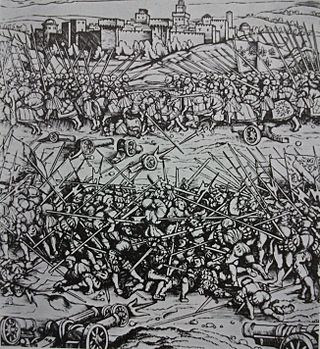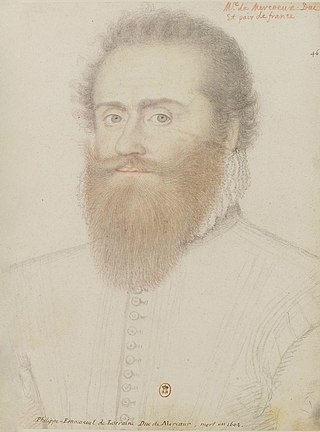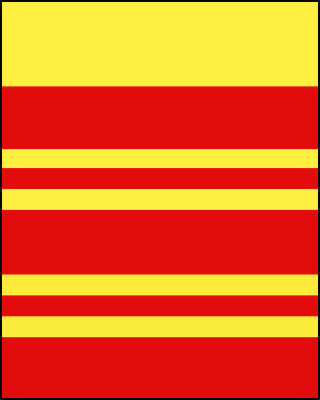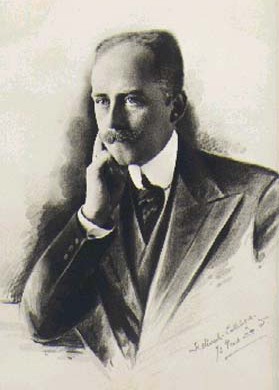| |||||
| Decades: | |||||
|---|---|---|---|---|---|
| See also: | Other events of 1518 History of France • Timeline • Years | ||||
Events from the year 1518 in France
| |||||
| Decades: | |||||
|---|---|---|---|---|---|
| See also: | Other events of 1518 History of France • Timeline • Years | ||||
Events from the year 1518 in France
The Capetian dynasty, also known as the House of France, is a dynasty of Frankish origin, and a branch of the Robertians agnatically, and the Karlings through female lines. It is among the largest and oldest royal houses in Europe and the world, and consists of Hugh Capet, the founder of the dynasty, and his male-line descendants, who ruled in France without interruption from 987 to 1792, and again from 1814 to 1848. The senior line ruled in France as the House of Capet from the election of Hugh Capet in 987 until the death of Charles IV in 1328. That line was succeeded by cadet branches, the Houses of Valois and then Bourbon, which ruled without interruption until the French Revolution abolished the monarchy in 1792. The Bourbons were restored in 1814 in the aftermath of Napoleon's defeat, but had to vacate the throne again in 1830 in favor of the last Capetian monarch of France, Louis Philippe I, who belonged to the House of Orléans. Cadet branches of the Capetian House of Bourbon are still reigning over Spain and Luxembourg.

The 1510s decade ran from January 1, 1510, to December 31, 1519.

Year 1562 (MDLXII) was a common year starting on Thursday of the Julian calendar.

Year 1518 (MDXVIII) was a common year starting on Friday of the Julian calendar. Within much of Christian Europe, New Year's Day was celebrated on January 1, the rule in the Roman Empire since 45 BC, and in 1518, the year ran from January 1, 1518 to December 31, 1518. In England and Scandinavia, the year ran from the Feast of the Annunciation to March 24, 1519; and in France from Easter Sunday to April 23, 1519. For instance, the will of Leonardo da Vinci, drafted in Amboise on 23 April 1519, shows the legend "Given on the 23rd of April 1518, before Easter".* See Wikisource "1911 Encyclopædia Britannica/Easter".

Year 1515 (MDXV) was a common year starting on Monday of the Julian calendar.

The House of Bourbon is a dynasty that originated in the Kingdom of France as a branch of the Capetian dynasty, the royal House of France. Bourbon kings first ruled France and Navarre in the 16th century. A branch descended from the French Bourbons came to rule Spain in the 18th century and is the current Spanish royal family. Further branches, descended from the Spanish Bourbons, held thrones in Naples, Sicily, and Parma. Today, Spain and Luxembourg have monarchs of the House of Bourbon. The royal Bourbons originated in 1272, when Robert, the youngest son of King Louis IX of France, married the heiress of the lordship of Bourbon. The house continued for three centuries as a cadet branch, serving as nobles under the direct Capetian and Valois kings.

The House of Albret, which derives its name from the lordship (seigneurie) of Albret (Labrit), situated in the Landes, was one of the most powerful feudal families of France and Navarre during the Middle Ages.

Vendôme is a subprefecture of the department of Loir-et-Cher, France. It is also the department's third-biggest commune with 15,856 inhabitants (2019).

Duke of Bourbon is a title in the peerage of France. It was created in the first half of the 14th century for the eldest son of Robert of France, Count of Clermont, and Beatrice of Burgundy, heiress of the lordship of Bourbon. In 1416, with the death of John of Valois, the Dukes of Bourbon were simultaneously Dukes of Auvergne.

Loyset Compère was a Franco-Flemish composer of the Renaissance. Of the same generation as Josquin des Prez, he was one of the most significant composers of motets and chansons of that era, and one of the first musicians to bring the light Italianate Renaissance style to France.

Charles Amadeus of Savoy, Duke of Nemours was a French military leader and magnate. He was the father of the penultimate Duchess of Savoy and of a Queen of Portugal.

The Seigneurs and Dukes of Mercœur were a line of powerful lords deriving their name from the estate of Mercœur in Auvergne, France. The line became extinct in the 14th century, and passed by inheritance to the dauphins of Auvergne, counts of Clermont. In 1426 it passed to the Bourbons by the marriage, of Jeanne de Clermont, dauphine of Auvergne, to Louis I, Count of Montpensier. It formed part of the confiscated estates of the Constable de Bourbon, and was given by Francis I and Louise of Savoy to Antoine, Duke of Lorraine, and his wife, Renée of Bourbon, sister of the Constable. Nicholas of Lorraine, son of Duke Antoine, was created Duke of Mercœur and a peer of France in 1569. His son Philippe Emmanuel left a daughter, who married the duc de Vendôme in 1609.

Philippe-Emmanuel de Lorraine, Duke of Mercœur and of Penthièvre was a French soldier, a prince of the Holy Roman Empire and a prominent member of the Catholic League, who fought for Breton political independence from the House of Bourbon.
This is a list of the Counts and Dukes of Étampes, a French fief.

In the 11th and 12th centuries the Countship of Penthièvre in Brittany belonged to a branch of the sovereign House of Brittany. It initially belonged to the House of Rennes. Alan III, Duke of Brittany, gave it to his brother Eudes in 1035, and his descendants formed a cadet branch of the ducal house.

The Praguerie was a revolt of the French nobility against King Charles VII from February to July 1440.

Françoise d'Alençon was the eldest daughter of René of Alençon and Margaret of Lorraine, and the younger sister and despoiled heiress of Charles IV, Duke of Alençon.

Prince Emmanuel of Orléans, Duke of Vendôme was a French royal from the House of Orléans.

Jeanne d'Albret, also known as Jeanne III, was Queen of Navarre from 1555 to 1572.
Events from the year 1517 in France